Improvement of Skin Penetration, Antipollutant Activity and Skin Hydration of 7,3′,4′-Trihydroxyisoflavone Cyclodextrin Inclusion Complex
Abstract
:1. Introduction
2. Materials and Methods
2.1. Materials
2.2. Methods
2.2.1. Preparation of 734THIF Cyclodextrin Complex (7HP)
2.2.2. High Performance Liquid Chromatography (HPLC) System
2.2.3. Yield and Water Solubility
2.2.4. Morphology
2.2.5. Powder X-ray Diffraction (XRD)
2.2.6. Fourier-Transform Infrared Spectrometer (FTIR)
2.2.7. Phase Solubility Studies
2.2.8. 1H-Nuclear Magnetic Resonance (1H-NMR)
2.2.9. Photostability Assay
2.2.10. In Vitro Skin Penetration
2.2.11. DPPH Scavenging Ability
2.2.12. Cell Viability Assay
2.2.13. Reactive Oxygen Species (ROS) Assay
2.2.14. Evaluation of PM-Induced Protein Expression in Keratinocytes by Western Blot
2.3. Clinical Trial
2.3.1. Study Subjects
2.3.2. Study Design
2.3.3. Ethics
2.4. Statistical Analysis
3. Results
3.1. The Optimal Ratio of 7HP Through Complex Formation and Drug Solubility
3.2. 7HPs Enhanced Solubility through Morphology and Amorphous Transformation
3.3. 734THIF Interacted with Cyclodextrin by Hydrogen Bonding
3.4. Photostability of 5-7HP
3.5. Skin Penetration Enhancement through 7HPs Formation
3.6. 5-7HP Retained DPPH Scavenging Ability and Increased Cell Viability
3.7. 5-7HP Inhibited PM-Induced Reactive Oxygen Species (ROS) Generation
3.8. 5-7HP Decreased PM-Induced Inflammation and Aging and PM-Decreased Moisture through MAPK Pathway in Keratinocytes
3.9. 5-7HP Enhanced Skin Hydration in Pilot Study
4. Discussion
5. Conclusions
Author Contributions
Funding
Acknowledgments
Conflicts of Interest
References
- Chriscaden, K.; Osseiran, N. WHO Releases Country Estimates on Air Pollution Exposure and Health Impact. Available online: https://www.who.int/news-room/detail/27-09-2016-who-releases-country-estimates-on-air-pollution-exposure-and-health-impact (accessed on 26 June 2019).
- Sun, Q.; Hong, X.; Wold, L.E. Cardiovascular effects of ambient particulate air pollution exposure. Circulation 2010, 121, 2755–2765. [Google Scholar] [CrossRef]
- Jiménez, E.; Linares, C.; Rodríguez, L.F.; Díaz, J. Short-term impact of particulate matter (PM2.5) on daily mortality among the over-75 age group in Madrid (In Spain). Sci. Total Environ. 2009, 407, 5486–5492. [Google Scholar] [CrossRef]
- Sárdy, M. Role of matrix metalloproteinases in skin ageing. Connect. Tissue Res. 2009, 50, 132–138. [Google Scholar] [CrossRef]
- Vierkötter, A.; Schikowski, T.; Ranft, U.; Sugiri, D.; Matsui, M.; Krämer, U.; Krutmann, J. Airborne particle exposure and extrinsic skin aging. J. Investig. Dermatol. 2010, 130, 2719–2726. [Google Scholar] [CrossRef]
- Lee, C.W.; Lin, Z.C.; Hu, S.C.S.; Chiang, Y.C.; Hsu, L.F.; Lin, Y.C.; Lee, I.T.; Tsai, M.H.; Fang, J.Y. Urban particulate matter down-regulates filaggrin via COX2 expression/PGE2 production leading to skin barrier dysfunction. Sci. Rep. 2016, 6, 27995. [Google Scholar] [CrossRef] [Green Version]
- Blaydon, D.C.; Kelsell, D.P. Defective channels lead to an impaired skin barrier. J. Cell Sci. 2014, 127, 4343–4350. [Google Scholar] [CrossRef]
- Young, L.; Je, Y.J.; Lee, S.S.; Li, Z.J.; Choi, D.K.; Kwon, Y.B.; Sohn, K.C.; Im, M.; Seo, Y.J.; Lee, J.H. Changes in transepidermal water loss and skin hydration according to expression of aquaporin-3 in psoriasis. Ann. Dermatol. 2012, 24, 168–174. [Google Scholar]
- McDaniel, D.; Farris, P.; Valacchi, G. Atmospheric skin aging-Contributors and inhibitors. J. Cosmet. Dermatol. 2018, 17, 124–137. [Google Scholar] [CrossRef]
- Park, J.S.; Kim, D.H.; Lee, J.K.; Lee, J.Y.; Kim, D.H.; Kim, H.K.; Lee, H.J.; Kim, H.C. Natural ortho-dihydroxyisoflavone derivatives from aged Korean fermented soybean paste as potent tyrosinase and melanin formation inhibitors. Bioorg. Med. Chem. Lett. 2010, 20, 1162–1164. [Google Scholar] [CrossRef]
- Kim, B.B.; Kim, J.R.; Kim, J.H.; Kim, Y.A.; Park, J.S.; Yeom, M.H.; Joo Lee, H.; Lee, K.W.; Kang, N.J. 7,3′,4′-Trihydroxyisoflavone Ameliorates the Development of Dermatophagoides farinae-Induced Atopic Dermatitis in NC/Nga Mice. Evid. Based Complement. Alternat. Med. 2013, 2013, 636597. [Google Scholar] [CrossRef]
- Lee, D.E.; Lee, K.W.; Byun, S.; Jung, S.K.; Song, N.; Lim, S.H.; Heo, Y.S.; Kim, J.E.; Kang, N.J.; Kim, B.Y.; et al. 7,3’,4’-Trihydroxyisoflavone, a metabolite of the soy isoflavone daidzein, suppresses ultraviolet B-induced skin cancer by targeting Cot and MKK4. J. Biol. Chem. 2011, 286, 14246–14256. [Google Scholar] [CrossRef]
- Ipar, V.S.; Dsouza, A.; Devarajan, P.V. Enhancing Curcumin Oral Bioavailability Through Nanoformulations. Eur. J. Drug Metab. Pharm. 2019, in press. [Google Scholar] [CrossRef]
- Tambe, A.; Mokashi, P.; Pandita, N. Ex-vivo intestinal absorption study of boswellic acid, cyclodextrin complexes and poloxamer solid dispersions using everted gut sac technique. J. Pharm. Biomed. Anal. 2019, 167, 66–73. [Google Scholar] [CrossRef]
- Domokos, A.; Balogh, A.; Dénes, D.; Nyerges, G.; Ződi, L.; Farkas, B.; Marosi, G.; Nagy, Z.K. Continuous manufacturing of orally dissolving webs containing a poorly soluble drug via electrospinning. Eur. J. Pharm. Sci. 2019, 130, 91–99. [Google Scholar] [CrossRef]
- Lu, Y.; Guo, T.; Qi, J.; Zhang, J.; Wu, W. Enhanced dissolution and stability of lansoprazole by cyclodextrin inclusion complexation: Preparation, characterization, and molecular modeling. AAPS PharmSciTech 2012, 13, 1222–1229. [Google Scholar] [CrossRef]
- Loftsson, T.; Brewster, M.E. Cyclodextrins as functional excipients: Methods to enhance complexation efficiency. Int. J. Pharm. Sci. Res. 2012, 101, 3019–3032. [Google Scholar] [CrossRef]
- Michalska, P.; Wojnicz, A.; Ruiz-Nuño, A.; Abril, S.; Buendia, I.; León, R. Inclusion complex of ITH12674 with 2-hydroxypropyl-β-cyclodextrin: Preparation, physical characterization and pharmacological effect. Carbohydr. Polym. 2017, 157, 94–104. [Google Scholar] [CrossRef]
- Nguyen, T.A.; Liu, B.; Zhao, J.; Thomas, D.S.; Hook, J.M. An investigation into the supramolecular structure, solubility, stability and antioxidant activity of rutin/cyclodextrin inclusion complex. Food Chem. 2013, 136, 186–192. [Google Scholar] [CrossRef]
- Pandya, P.; Gattani, S.; Jain, P.; Khirwal, L.; Surana, S. Co-solvent Evaporation Method for Enhancement of Solubility and Dissolution Rate of Poorly Aqueous Soluble Drug Simvastatin: In vitro–In vivo Evaluation. AAPS PharmSciTech 2008, 9, 1247–1252. [Google Scholar] [CrossRef]
- Loftsson, T.; Jarho, P.; Másson, M.; Järvinen, T. Cyclodextrins in drug delivery. Expert Opin. Drug Deliv. 2005, 2, 335–351. [Google Scholar] [CrossRef]
- Huang, P.H.; Tseng, C.H.; Lin, C.Y.; Lee, C.W.; Yen, F.L. Preparation, characterizations and anti-pollutant activity of 7,3′,4′-trihydroxyisoflavone nanoparticles in particulate matter-induced HaCaT keratinocytes. Int. J. Nanomed. 2018, 13, 3279–3293. [Google Scholar] [CrossRef]
- Andonova, V.; Peneva, P.; Georgiev, G.S.; Toncheva, V.T.; Apostolova, E.; Peychev, Z.; Dimitrova, S.; Katsarova, M.; Petrova, N.; Kassarova, M. Ketoprofen-loaded polymer carriers in bigel formulation: An approach to enhancing drug photostability in topical application forms. Int. J. Nanomed. 2017, 12, 6221–6238. [Google Scholar] [CrossRef]
- COLIPA Guidelines: Guidlines for Percutaneous Absorption/Penetration. Available online: http://www.jacvam.jp/files/doc/05_01/05_01_Z3.pdf (accessed on 20 June 2019).
- Kassis, V.; Søndergaard, J. Heat-separation of normal human skin for epidermal and dermal prostaglandin analysis. Arch. Dermatol. Res. 1982, 273, 301–306. [Google Scholar] [CrossRef]
- Huang, P.H.; Hu, S.C.S.; Lee, C.W.; Yeh, A.C.; Tseng, C.H.; Yen, F.L. Design of acid-responsive polymeric nanoparticles for 7,3′,4′-trihydroxyisoflavone topical administration. Int. J. Nanomed. 2016, 11, 1615–1627. [Google Scholar]
- Cheon, C.; Park, S.; Park, J.S.; Oh, S.M.; Jang, S.; Go, H.Y.; Jang, B.H.; Shin, Y.C.; Ko, S.G. KM110329 in adult patients with atopic dermatitis: A randomised, double-blind, placebo-controlled, multicentre trial–study protocol. BMC Complement. Altern. Med. 2013, 13, 335. [Google Scholar]
- Dittert, L.W.; Higuchi, T.; Reese, D.R. Phase solubility technique in studying the formation of complex salts of triamterene. J. Pharm. Sci. 1964, 53, 1325–1328. [Google Scholar] [CrossRef]
- Güleç, K.; Demirel, M. Characterization and Antioxidant Activity of Quercetin/Methyl-β-Cyclodextrin Complexes. Curr. Drug Deliv. 2016, 13, 444–451. [Google Scholar] [CrossRef]
- Borghetti, G.S.; Pinto, A.P.; Lula, I.S.; Sinisterra, R.D.; Teixeira, H.F.; Bassani, V.L. Daidzein/cyclodextrin/hydrophilic polymer ternary systems. Drug Dev. Ind. Pharm. 2011, 37, 886–893. [Google Scholar]
- Yotsumoto, K.; Ishii, K.; Kokubo, M.; Yasuoka, S. Improvement of the skin penetration of hydrophobic drugs by polymeric micelles. Int. J. Pharm. 2018, 553, 132–140. [Google Scholar] [CrossRef]
- Huang, L.Z.; Li, F.X.; Dong, C.; Wang, J.P.; Wu, H.J.; Shuang, S.M. Down-regulation of aquaporin3 expression by lipopolysaccharide via p38/c-Jun N-terminal kinase signalling pathway in HT-29 human colon epithelial cells. World J. Gastroenterol. 2015, 21, 4547–4554. [Google Scholar]
- Waiver of In Vivo Bioavailability and Bioequivalence Studies for Immediate-Release Solid Oral Dosage Forms Based on a Biopharmaceutics Classification System Guidance for Industry. Available online: https://www.fda.gov/regulatory-information/search-fda-guidance-documents/waiver-vivo-bioavailability-and-bioequivalence-studies-immediate-release-solid-oral-dosage-forms (accessed on 20 June 2019).
- Seo, J.Y.; Pandey, R.P.; Lee, J.; Sohng, J.K.; Namkung, W.; Park, Y.I. Quercetin 3-O-xyloside ameliorates acute pancreatitis in vitro via the reduction of ER stress and enhancement of apoptosis. Phytomedicine 2019, 55, 40–49. [Google Scholar] [PubMed]
- Salem, H.F.; Kharshoum, R.M.; Abou-Taleb, H.A.; Naguib, D.M. Nanosized Transferosome-Based Intranasal In Situ Gel for Brain Targeting of Resveratrol: Formulation, Optimization, In Vitro Evaluation, and In Vivo Pharmacokinetic Study. AAPS PharmSciTech 2019, 20, 181. [Google Scholar] [PubMed]
- Baidya, D.; Kushwaha, J.; Mahadik, K.; Patil, S. Chrysin-loaded folate conjugated PF127-F68 mixed micelles with enhanced oral bioavailability and anticancer activity against human breast cancer cells. Drug Dev. Ind. Pharm. 2019, 45, 852–860. [Google Scholar] [PubMed]
- Sieniawska, E.; Œwi¹tek, £.; Wota, M.; Rajtar, B.; Polz-Dacewicz, M. Microemulsions of essentials oils–Increase of solubility and antioxidant activity or cytotoxicity? Food Chem. Toxicol. 2019, 129, 115–124. [Google Scholar] [CrossRef] [PubMed]
- El-Laithy, H.M.; Badawi, A.; Abdelmalak, N.S.; Elsayyad, N.M.E. Stabilizing excipients for engineered clopidogrel bisulfate procubosome derived in situ cubosomes for enhanced intestinal dissolution: Stability and bioavailability considerations. Eur. J. Pharm. Sci. 2019, 136, 104954. [Google Scholar] [CrossRef] [PubMed]
- Challa, R.; Ahuja, A.; Ali, J.; Khar, R.K. Cyclodextrins in drug delivery: An updated review. AAPS PharmSciTech 2005, 6, 43. [Google Scholar] [CrossRef] [PubMed]
- Zhang, W.; Gong, X.; Cai, Y.; Zhang, C.; Yu, X.; Fan, J.; Diao, G. Investigation of water-soluble inclusion complex of hypericin with â-cyclodextrin polymer. Carbohydr. Polym. 2013, 95, 366–370. [Google Scholar] [PubMed]
- Lane, M.E. Skin penetration enhancers. Int. J. Pharm. 2013, 447, 12–21. [Google Scholar] [CrossRef]
- Furuishi, T.; Takahashi, S.; Ogawa, N.; Gunji, M.; Nagase, H.; Suzuki, T.; Endo, T.; Ueda, H.; Yonemochi, E.; Tomono, K. Enhanced dissolution and skin permeation profiles of epalrestat with â-cyclodextrin derivatives using a cogrinding method. Eur. J. Pharm. Sci. 2017, 106, 79–86. [Google Scholar]
- Kim, Y.M.; Kim, J.; Jung, K.; Eo, S.; Ahn, K. The effects of particulate matter on atopic dermatitis symptoms are influenced by weather type: Application of spatial synoptic classification (SSC). Int. J. Hyg. Environ. Health 2018, 221, 823–829. [Google Scholar]
- Park, S.Y.; Byun, E.J.; Lee, J.D.; Kim, S.; Kim, H.S. Air Pollution, Autophagy, and Skin Aging: Impact of Particulate Matter (PM10) on Human Dermal Fibroblasts. Int. J. Mol. Med. 2018, 19, 2727. [Google Scholar] [CrossRef] [PubMed]
- Piao, M.J.; Ahn, M.J.; Kang, K.A.; Ryu, Y.S.; Hyun, Y.J.; Shilnikova, K.; Zhen, A.X.; Jeong, J.W.; Choi, Y.H.; Kang, H.K.; et al. Particulate matter 2.5 damages skin cells by inducing oxidative stress, subcellular organelle dysfunction, and apoptosis. Arch. Toxicol. 2018, 92, 2077–2091. [Google Scholar] [CrossRef] [PubMed] [Green Version]
- Sougrat, R.; Morand, M.; Gondran, C.; Barré, P.; Gobin, R.; Bonté, F.; Dumas, M.; Verbavatz, J.M. Functional expression of AQP3 in human skin epidermis and reconstructed epidermis. J. Investig. Dermatol. 2002, 118, 678–685. [Google Scholar] [CrossRef] [PubMed]
- Hara, M.; Ma, T.; Verkman, A.S. Selectively reduced glycerol in skin of aquaporin-3-deficient mice may account for impaired skin hydration, elasticity, and barrier recovery. J. Biol. Chem. 2002, 277, 46616–46621. [Google Scholar] [CrossRef] [PubMed]
- The SCCS Notes of Guidance for the Testing of Cosmetic Ingredients and Their Safety Evaluation 10th Revision. Available online: https://ec.europa.eu/health/sites/health/files/scientific_committees/consumer_safety/docs/sccs_o_224.pdf (accessed on 26 June 2019).
- Jiang, Y.; Jiang, X.; Law, K.; Chen, Y.; Gu, J.; Zhang, W.; Xin, H.; Sha, X.; Fang, X. Enhanced anti-tumor effect of 9-nitro-camptothecin complexed by hydroxypropyl-â-cyclodextrin and safety evaluation. Int. J. Pharm. 2011, 415, 252–258. [Google Scholar] [CrossRef] [PubMed]
- Verdier-Sévrain, S.; Bonté, F. Skin hydration: A review on its molecular mechanisms. J. Cosmet. Dermatol. 2007, 6, 75–82. [Google Scholar] [CrossRef] [PubMed]

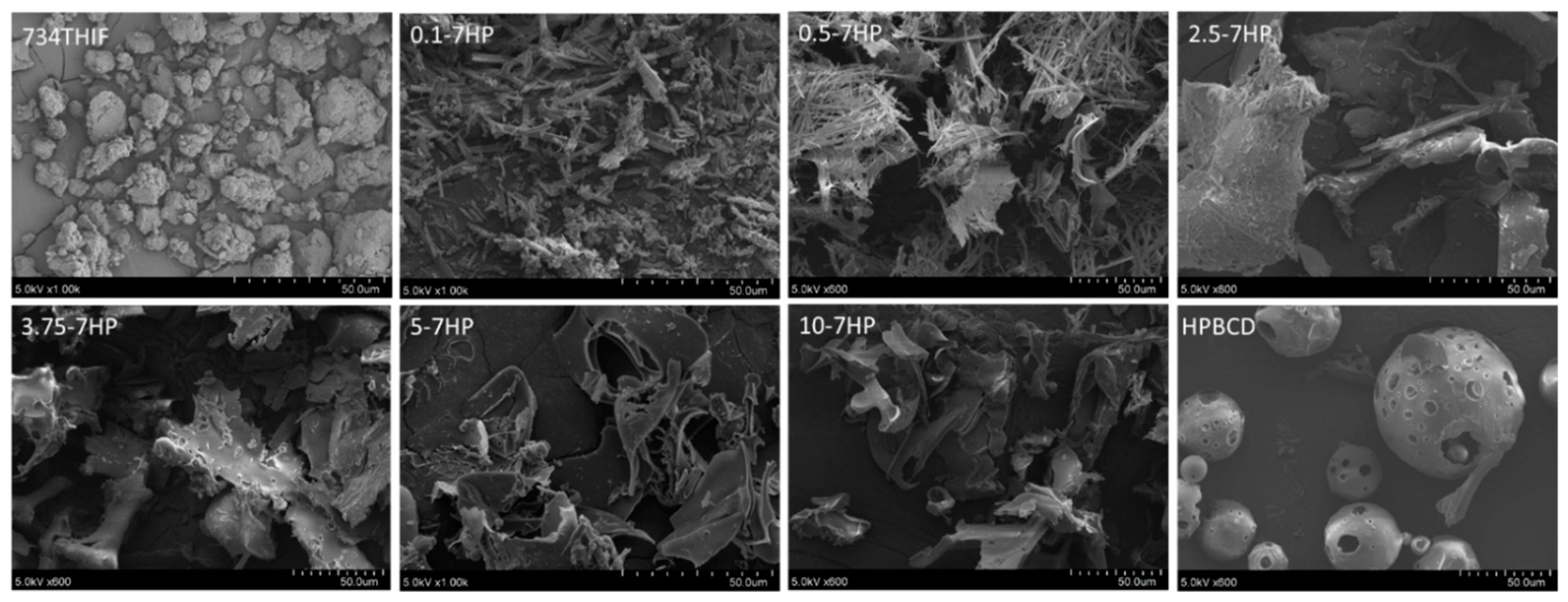
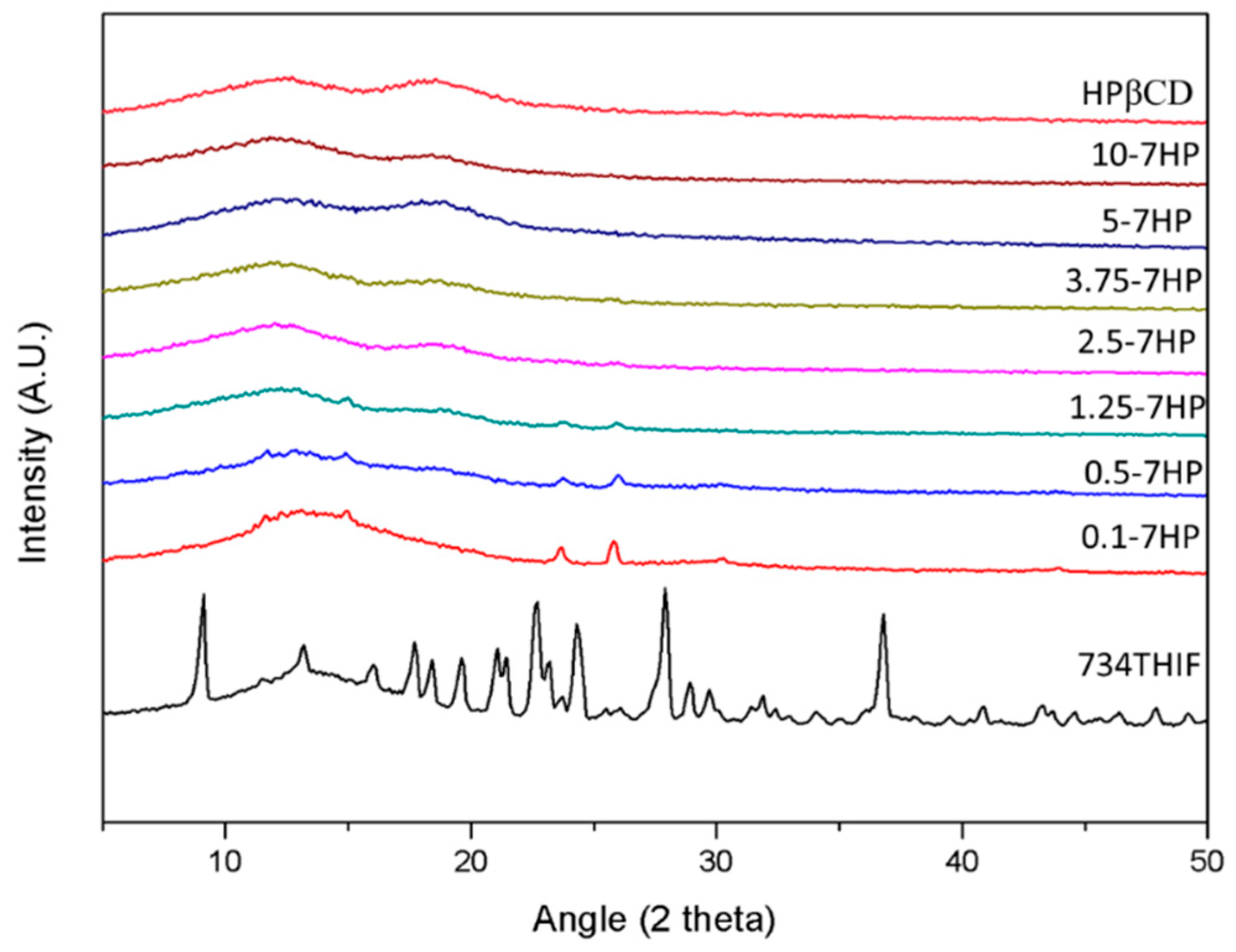



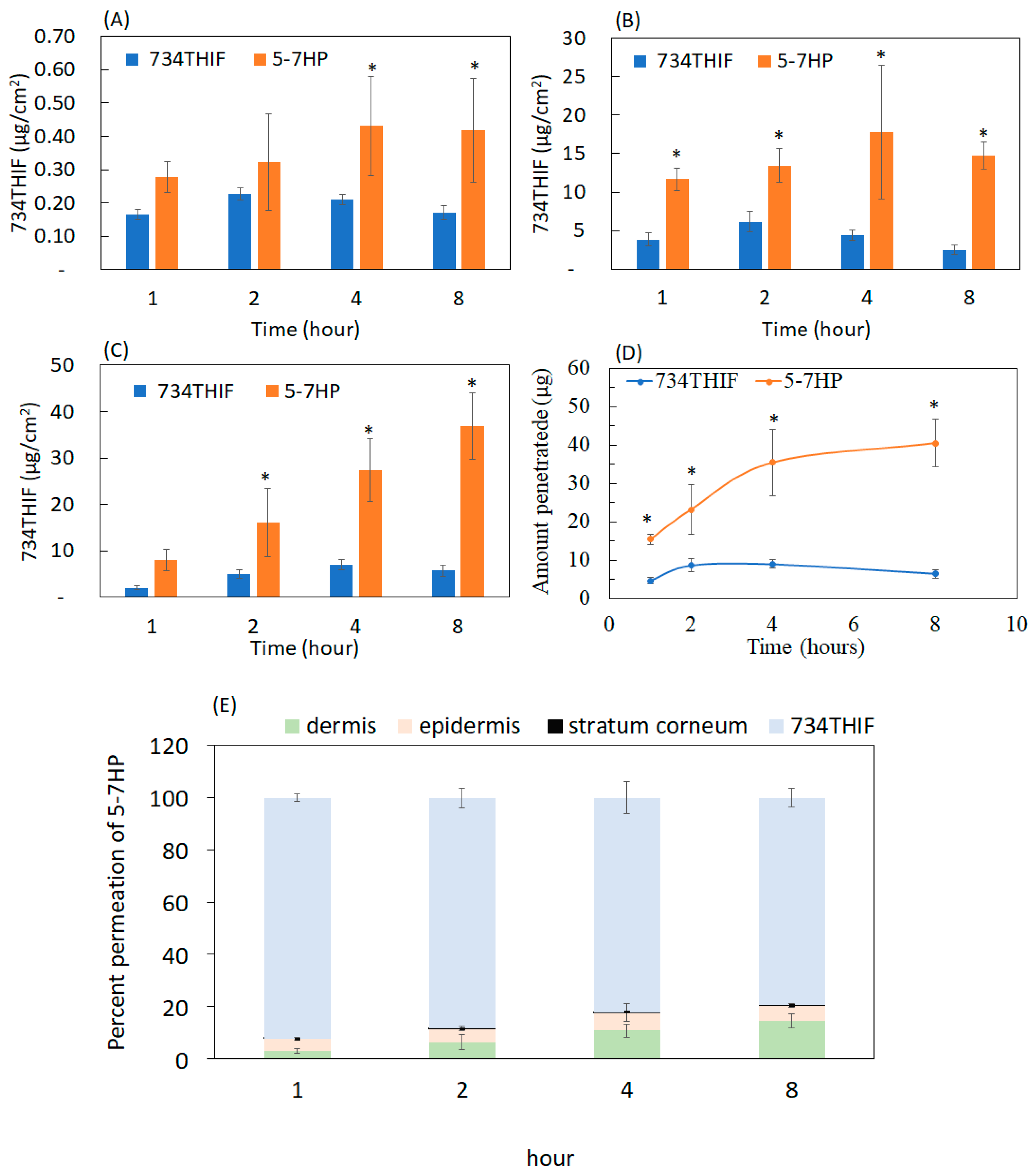
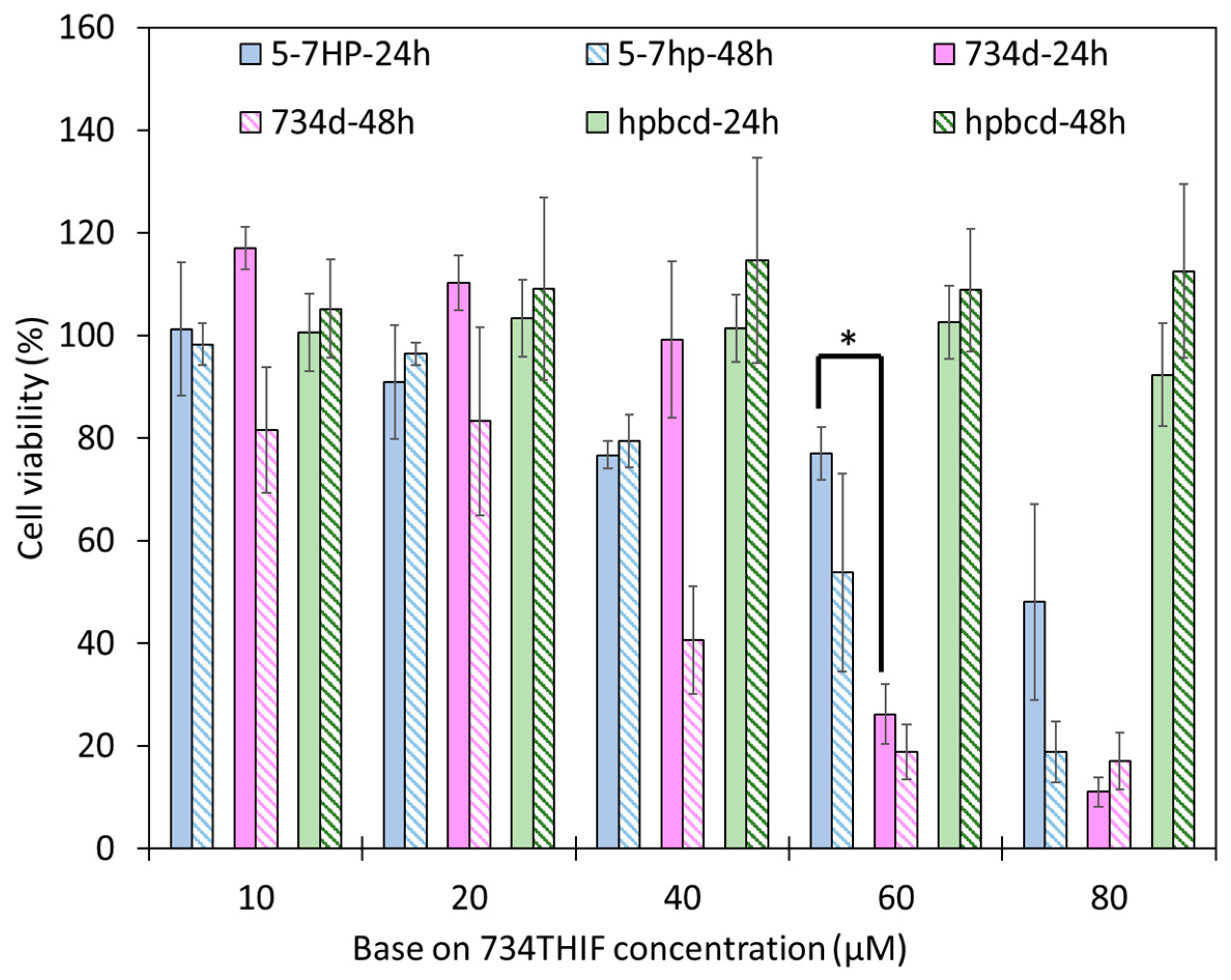
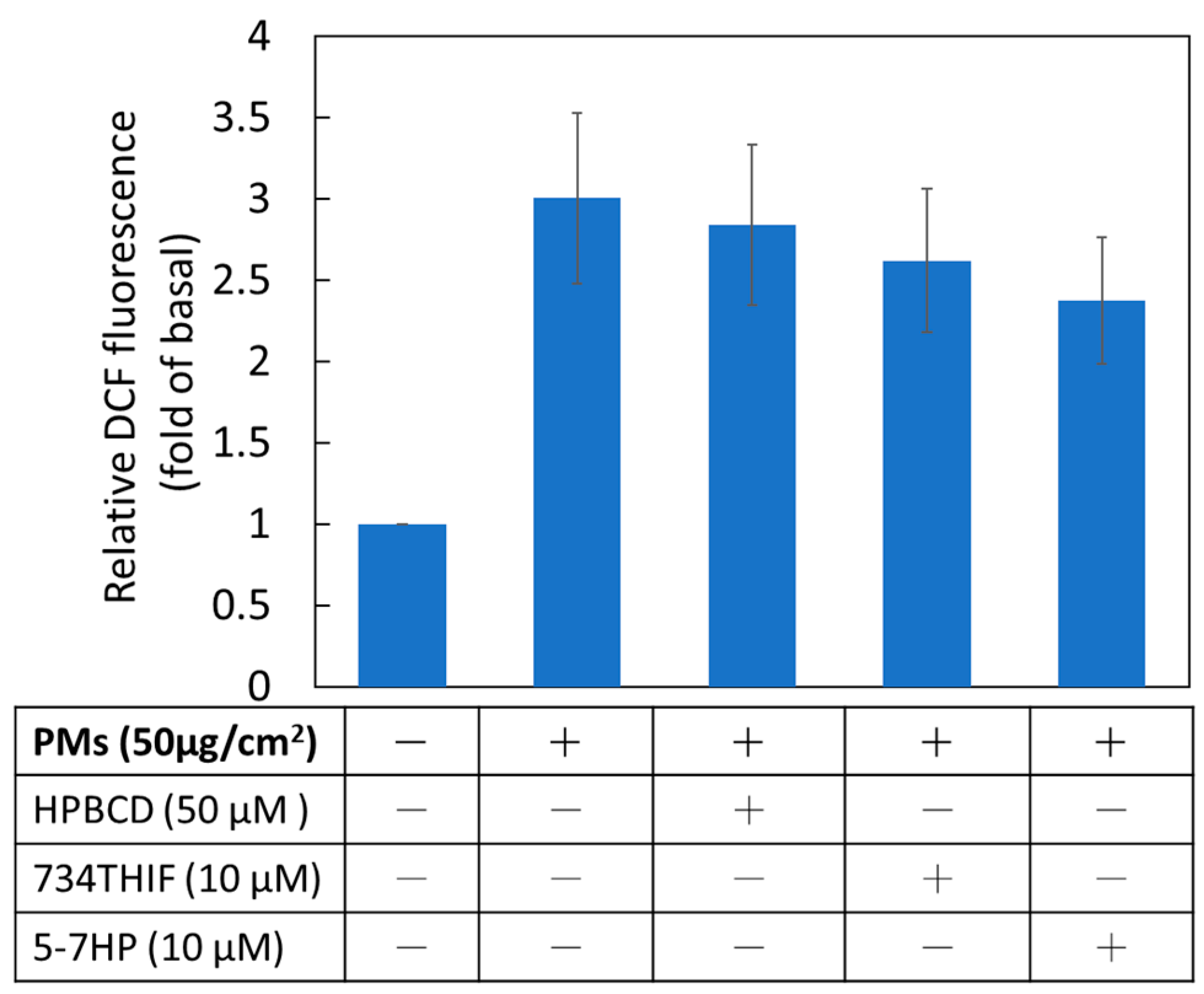
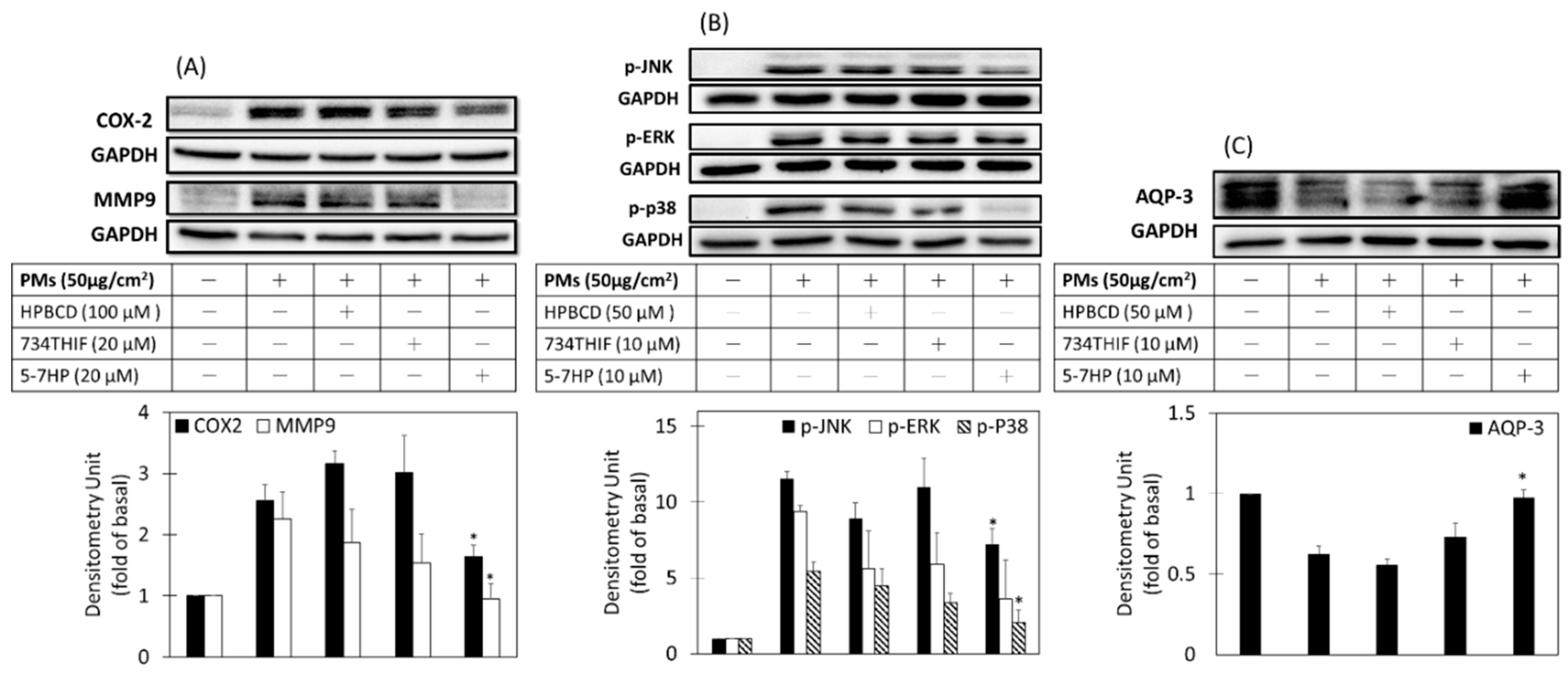
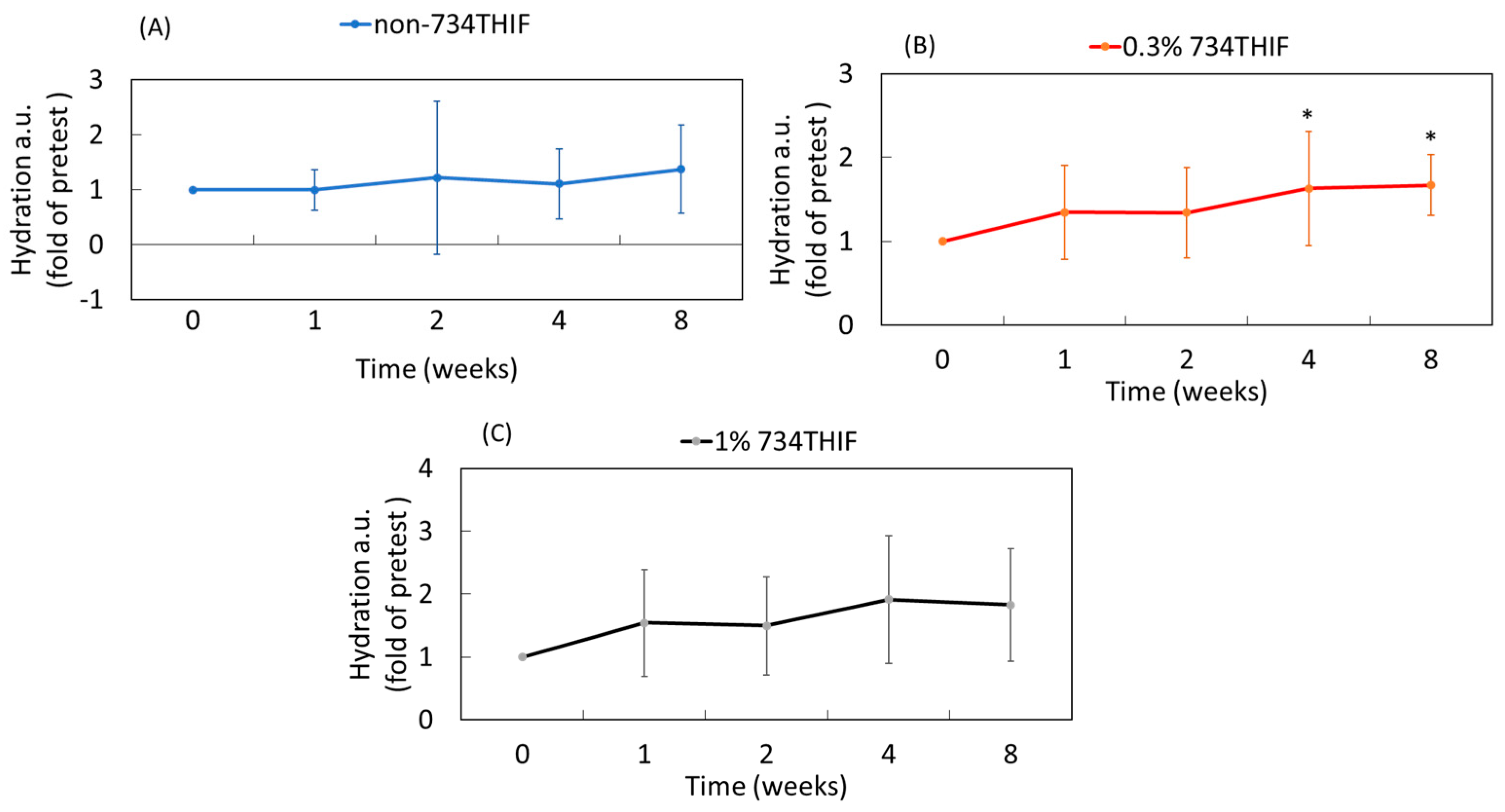
| Main inclusion criteria | (1) Men and women with age older than 20 years |
| (2) Individuals with skin dryness | |
| (3) Written informed consent for participation in the trial | |
| Main exclusion criteria | (1) Severe skin allergy, such as urticaria |
| (2) Secondary infection with bacteria, fungi, or virus | |
| (3) Uncontrolled hypertension (SBP > 145 mmHg or DBP > 95 mmHg) | |
| (4) Severe liver disability (2.5-fold the normal high range value for ALT, AST) | |
| (5) Severe renal disability (sCr > 2.0 mg/dL) | |
| (6) Women who are pregnant, lactating, planning a pregnancy or women of child-bearing age who do not agree to use proper contraception | |
| (7) Use of oral steroids, oral antibiotic or other immunosuppressants within the past 4 weeks | |
| (8) Treated by systemic photochemotherapy within the past 4 weeks | |
| (9) History of drug abuse | |
| (10) Hypersensitivity to isoflavone | |
| (11) Use of other investigational products within the past two months | |
| (12) History of psychiatry disorders | |
| (13) History of severe immunocompromise |
| Ingredient | Negative Control | 0.3% 734THIF | 1% 734THIF |
|---|---|---|---|
| 5-7HP | - | 8.4 g | 28 g |
| euxyl® PE9010 | 0.05 g | 0.05 g | 0.05 g |
| Sepigel 305 | 2 g | 2 g | 2g |
| water | added to 100 g | added to 100 g | added to 100 g |
| Name | HPBCD (mM) | 734THIF (mM) | Solubility (μg/mL) | ||
|---|---|---|---|---|---|
| - | 1 | 4.00 | ± | 0.90 | |
| 0.1-7HP | 0.1 | 4.07 | ± | 0.46 | |
| 0.5-7HP | 0.5 | 65.51 | ± | 4.89 | |
| 1.25-7HP | 1.25 | 188.08 | ± | 5.55 | |
| 2.5-7HP | 2.5 | 278.01 | ± | 83.76 | |
| 3.75-7HP | 3.75 | 311.39 | ± | 8.88 | |
| 5-7HP | 5 | 894.63 | ± | 20.96 | |
| 10-7HP | 10 | 965.66 | ± | 95.26 | |
| Group | SC50 (μg/mL) |
|---|---|
| 734THIF in H2O (734H) | NE a |
| 734THIF in DMSO (734D) | 19.49 ± 0.41 |
| 5-7HP in H2O | 19.03 ± 1.03 |
© 2019 by the authors. Licensee MDPI, Basel, Switzerland. This article is an open access article distributed under the terms and conditions of the Creative Commons Attribution (CC BY) license (http://creativecommons.org/licenses/by/4.0/).
Share and Cite
Huang, P.H.; Hu, S.C.S.; Yen, F.L.; Tseng, C.H. Improvement of Skin Penetration, Antipollutant Activity and Skin Hydration of 7,3′,4′-Trihydroxyisoflavone Cyclodextrin Inclusion Complex. Pharmaceutics 2019, 11, 399. https://doi.org/10.3390/pharmaceutics11080399
Huang PH, Hu SCS, Yen FL, Tseng CH. Improvement of Skin Penetration, Antipollutant Activity and Skin Hydration of 7,3′,4′-Trihydroxyisoflavone Cyclodextrin Inclusion Complex. Pharmaceutics. 2019; 11(8):399. https://doi.org/10.3390/pharmaceutics11080399
Chicago/Turabian StyleHuang, Pao Hsien, Stephen Chu Sung Hu, Feng Lin Yen, and Chih Hua Tseng. 2019. "Improvement of Skin Penetration, Antipollutant Activity and Skin Hydration of 7,3′,4′-Trihydroxyisoflavone Cyclodextrin Inclusion Complex" Pharmaceutics 11, no. 8: 399. https://doi.org/10.3390/pharmaceutics11080399





